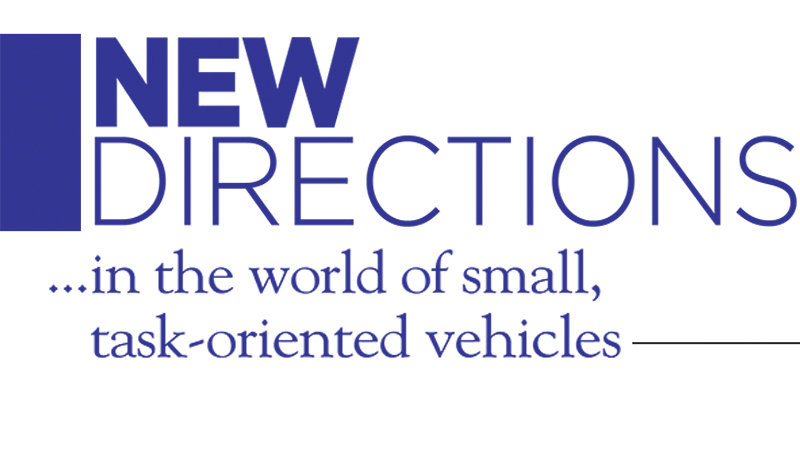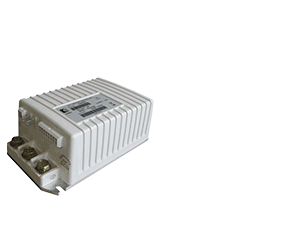There are a growing number of last mile delivery pilots being undertaken in the United States and Europe. These projects have essentially one goal: To test whether smaller cargo carrying vehicles can substitute for larger trucks in delivering goods from distribution points to final destinations, i.e., the last mile. The objective is to reduce congestion and reduce the carbon footprint of delivery systems.
Various types of small vehicles are being tested from three-wheeled e-bikes to light duty utility vehicles, and in my view this is a significant opportunity for traditional golf car manufacturers and their dealers to participate and grow into what is likely to be a very substantial market.
Versatile three-wheelers are making waves
A notable pilot is taking place in Miami, Florida. It is notable on two counts: First, it is sponsored by logistics giant, DHL Express, and second, the three-wheeled vehicle is from eCargo Cycles, a British firm, based in London, that has a number of similar projects underway in its home country.
The three-wheelers involved in the Miami pilot, and in eCargo’s projects in the U.K., are pedal-assisted, battery powered electrics. As may be seen in the picture below, the rear axle and two wheels in the back of the vehicle support the cargo box, which can be easily placed on, or taken off the vehicle.
A delivery infrastructure provides context for the eCargo bike’s operation. This infrastructure consists of a network of mini-hubs where goods are stored and are supplied by standard sized trucks. The eCargo bikes pick up goods from the mini-hubs for last mile delivery. A critical aspect of the infrastructure is a wireless connectivity system. DHL has teamed with REEF Technology, reputedly the largest operator of parking, mobility, and logistics hubs in North America, for this component of the project. If successful, DHL plans pilots in other U.S. cities and metropolitan areas.
The three-wheeled cycles are equipped with an accompanying cargo container and are capable of pulling up to 400 pounds or 60 cubic feet in volume. The short-term goal of DHL is to implement clean pickup and delivery solutions for 70% of its operations by 2025. Each e-Cargo Cycle deployed enables DHL to take one conventional delivery van off the road, reducing road traffic, noise and pollution while still providing fast and efficient deliveries for customers.
Advantages of the LDU as a last-mile delivery vehicle
LDU vehicles manufactured by golf car-type vehicle companies, as well as heavier duty utility vehicles, that are electric-powered, would appear to have important advantages over the three-wheel pedal assist vehicles shown above:
- First, being four-wheeled, rather than three-wheeled vehicles, they have inherently better stability;
- Greater load capacity–for example, the Club Car 411 UTV has a load capacity of 1,050 pounds, more than double that of the eCargo bike;
- A fully-powered electric drivetrain allows faster speed and consistent pace over a given delivery route, as compared with a pedal-assisted cycle;
- Equipped with a lithium battery pack, an LDU vehicle should yield at least an equivalent and likely even better operating range than the eCargo bike;
- Conclusion: Equipped with the telematics for vehicle and fleet connectivity and control, such as Club Car’s Connectivity system, the typical LDU will significantly outperform a three-wheel, pedal assisted vehicle.
Outlook for the light duty utility vehicle market
Small Vehicle Resource will be publishing its 10th biennial analysis of the small, task-oriented vehicle industry in which the urban/suburban mobility (USM) market factors significantly in the outlook to 2025. For the LDU segment we see growth in the low double digits, which means the market will increase by close to 70% over current levels. While the traditional legacy line of utility vehicles will increase in markets such as campgrounds, campuses, and golf, the last mile delivery market in the context of heightened demand for pollution-free vehicles will be the major factor in driving market growth.
The burden of legacy products and markets
When markets change, it is most often the case that start-ups lead the way forward. The reason for this is fairly simple: Established companies have a major investment in their proven markets and products that historically went to those markets.
When markets change or new opportunities arise, these “legacy” investments are a burden—that is, an obstacle to taking a new direction and seizing an opportunity that may be emerging. In addition, most of senior management is looking to retire and not interested in taking on new ventures and the risk of going against the company’s proven lineup of legacy products. Junior managers, on the other hand, must please the boss, if their careers are to go anywhere within the company.
Thus, the challenge for golf car-type manufacturers is to get beyond what has been successful in the past, build upon the advantages their legacy products could bring to new markets; e.g., electric drive train, flexible manufacturing systems, etc., and develop strategies to exploit the new opportunities—in this case, the USM market.
The role of dealers in the USM market
Dealers and dealer networks will play an important role in the USM market for the following reasons:
- The urban/suburban mobility market will be spread out across the United States, and the ubiquitous golf car dealer networks span this geography;
- Dealers have the mechanical expertise and experience to service electric-powered drive trains, which can be used exclusively in last mile delivery vehicles and in other areas of the USM market;
- Dealers are the local representatives of the vehicle manufacturers and have contacts within the community in both private and public sectors. These relationships are critical to growing the market, given the fact that USM market development will almost always be a joint public-private undertaking.
We can look forward in the near future, I think, to see dealers do two things to shed their own legacy burdens: First, those whose company name contains the words, “golf cart” will eliminate the “t” (many dealers, of course, have); and second, put together an urban/suburban mobility department that focuses on the USM market.
Quote – The challenge for golf car-type manufacturers is to get beyond what has been successful in the past—getting beyond legacy products and markets, such as golf.




















